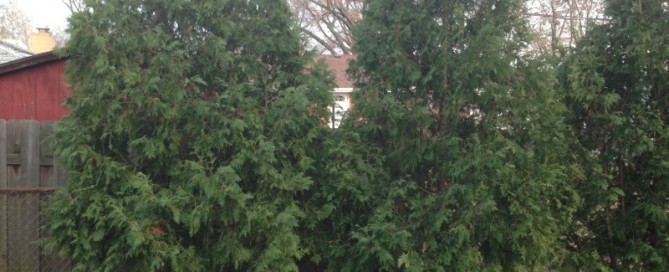Eastern Arborvitae
Also called northern white cedar. Though usually planted as a shrub or as a hedge, it can be, after decades, a tree more than 40 feet tall. It is native in eastern North America, and planted very widely. is a very adaptable landscape plant with fragrant foliage. The leaves are glossy and green, covering the trunk from the ground up and the branches are upsweeping. The trunk is dark, grayish brown and shreds. Excellent for hedges. The yellowish-brown fall foliage is often considered unattractive. Cultivars include 'Affinity', 'Emerald', 'Hills Dark Green', 'Nigra', 'Sunkist', 'Techny', 'Wareana Lutescens', 'Fastigiata', 'Columnaris', and 'Pyramidalis'.
Plants need full sun to light shade, prefers humidity and moist soils, but tolerant of clay and dry soils. Fertilize with organic formulations that promote woody, strong growth rather than excessive foliar growth. Avoid storm damage by pruning young trees to a single trunk. In winter, use twine or burlap to protect branches from breakage. Take care not to overprune as the tree does not recover well. Damage from browsing deer can be common. Roots are quite shallow, so can be easily uprooted in wind and storms. Prone to bagworms.
For more information - http://www.mortonarb.org/trees-plants/tree-plant-descriptions/eastern-arborvitae
